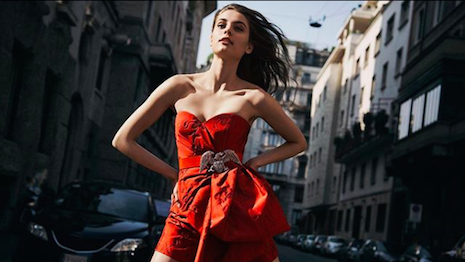 Giorgio Armani is one of the most popular Italian luxury brands, retaining its allure and status as a luxury ambassador for Italy. Image credit: Giorgio Armani
Giorgio Armani is one of the most popular Italian luxury brands, retaining its allure and status as a luxury ambassador for Italy. Image credit: Giorgio Armani
NEW YORK – A recent Luxury Marketing Council salon luncheon hosted by Boston Consulting Group at its New York office unearthed a dozen trends based on its annual BCG/Altagamma survey, “True-Luxury Global Consumer Insight 2019.” Pierre Duprelle, managing director and partner at BCG, presented the findings, with a following discussion moderated by Luxury Marketing Council CEO Chris Olshan. Here are the trends: 12 key trends Collaborations: Awareness reaching ~90 percent, with 50 percent of true-luxury consumers purchasing collaborations and special editions, driven by Chinese (62 percent) and younger generations (67 percent Gen Z, 60 percent millennials) Secondhand: Reached 7 percent of personal luxury market value and is growing 12 percent per year. Out of true-luxury consumers, 34 percent sell secondhand products, while 26 percent buy. Eighty percent of secondhand market participants use online channels to get informed and to trade Sustainability: Influences purchase behavior of ~60 percent of true-luxury consumers (+12 percent versus 2013), driven by environmental, animal and ethical manufacturing concerns Luxury casualwear: Casual approach to social and professional occasions continues to grow, now affecting 74 percent of true-luxury consumers, with still further expected growth in spending driven by sneakers and jeans Influencers: Their relevance in shaping consumer purchase decisions continues to increase, affecting ~2x as many true-luxury consumers in China than in Europe and United States Social media: Keep growing in all geographies, by far greatest influence lever in China, soon to overtake magazines in Europe and the U.S. Online: Continues to grow, with more than 20 percent of last-purchase occasions online, and contributes to overall market growth more than cannibalizing physical channels sales (~60 percent in addition versus 40 percent of cannibalization) Omnichannel: Accounts for 50 percent overall, with substantial variation by geography (64 percent China, 42 percent European Union) Mono-brand stores: Appear to have stabilized in true-luxury consumers' minds, no longer decreasing in a significant way, except for China “Made-in”: Made-in Italy continues to strengthen its global lead among true-luxury consumers and among millennials, and reconquered leadership among Chinese versus Made-in France Mix and match: Luxury niche and sports brands driving greater shift. Exclusivity and perception of better value are driving consumers to niche brands, whereas comfort and active lifestyle to sportswear brands Customization: Demand stabilized at high level. Product configuration, made to measure and bespoke products most desired Executives from Luxury Marketing Council member brands attending the BCG presentation included Blue Fountain Media, Gruppo Italia, The Pierre - A Taj Hotel, Kravet Inc., LR Paris, Remy Cointreau, Premiere Response, Wealth Engine, Keller Williams NYC, Silvertone Consulting, Vitesse, Kreps DeMaria, Transcendent, Springut Law PC, Modco Media, Service Plan New York LP, Concierge Sales Network, Retail Advisors Inc., M. Brennan Design Associates, Shere Inc., LookStyler and 21 Club.
